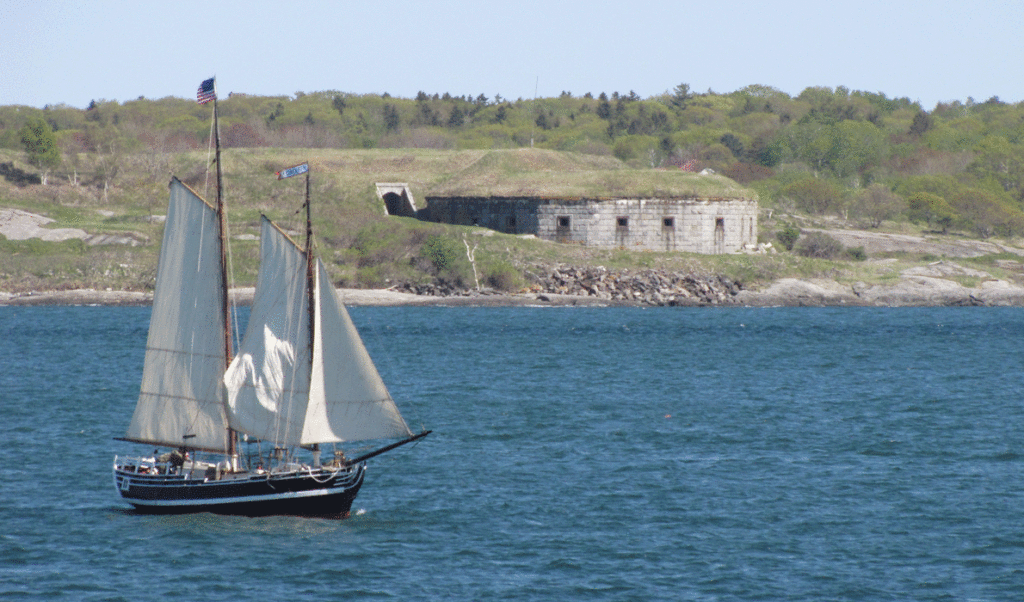Tours of estuarine farms, studios, and gardens
Estuaries have always been good places to live and have a farm, with rich meadow grass for cattle, floodplain soils, and access to water. On July 22, three bicycle tours of coastal farms and art studios will offer riders of all ages a glimpse of culture in the Merrymeeting Bay watershed, which is home to one of the highest concentrations of farms in Maine.
Bowdoinham has farms for vegetables, fruits, herbs, flowers, cows, sheep, goats, alpacas, and chickens. Local artists will have work including paintings, prints, fabric, furniture, and photography. The rides and open farms and studios are sponsored by Maine Farmland Trust, Kennebec Estuary Land Trust, and Merrymeeting Trailblazers, a group working to create Merrymeeting Trail, a proposed 25-mile multi-use trail through Gardiner, Richmond, Bowdoinham, and Topsham, connecting the Kennebec River Rail Trail with the Brunswick Bike Path.
Preregistration for the rides is not required, but is appreciated: merrymeetingtrail.org/events.
On July 15, the Georges River Land Trust will host the 27th Annual Gardens in the Watershed tour, a self-guided exploration of six fascinating and diverse gardens in the lower watershed towns of Rockland, Owls Head, and South Thomaston.
A pesticide-free Casco Bay (for now?)
Portland is one of some 30 towns in Maine with a local ordinance about pesticide use.
On July 1, Portland’s Pesticide Use Ordinance goes into effect for public properties like city parks, while restrictions on applying synthetic pesticides on private property will go into effect in January 2019. But local control of chemical use has been challenged by Gov. Paul LePage, whose latest bill to prohibit municipal pesticide ordinances was rejected by the legislature in April.
Meanwhile, pesticides continue to be part of the controversy surrounding the reauthorization of the U.S. Farm Bill. A House of Representatives version of the bill, passed in May, amends the federal pesticide law with a provision that prohibits local governments from restricting pesticide use on private property within their jurisdictions. The House bill also would allow the EPA to approve new pesticides without assessing the potential impact on endangered fish and wildlife. The Senate bill allows for local pesticide laws and keeps impact assessments and water quality protections intact. The two versions of the bill next moved into conferencing for resolution.The pesticide industry spent $43 million on lobbying Congress this season.
Dead fish in the Penobscot, Union rivers
Early summer drought conditions that led to low flows in many rivers also complicated dam operations. Thousands of alewives and one endangered Atlantic salmon died as a result of work at the Orono Dam on the Stillwater branch of the Penobscot River.
Brookfield Renewable, the company that manages the dam, drew down the impoundment to install flashboards and raise the height of the dam. Fish attempting to migrate during the period were affected, and the public became aware when dead fish were seen and smelled floating around the Bangor waterfront.
In Ellsworth, the Downeast Salmon Federation documented hundreds of thousands of juvenile alewives killed at Brookfield’s Union River dam. The young fish were on their way to salt water after hatching in upstream lakes.
“The federal license for this dam is still under review and downstream passage requirements have been tentatively proposed by federal agencies, however these upgrades are at best years away,” said DSF in a statement. “In the meantime the Union River, Frenchman Bay, and the Gulf of Maine are being robbed of generations of native, ecologically critical fish.”
Dam operators hold an “incidental take” permit under the Endangered Species Act which allows for some level of fish mortality.
Stripers are running
Thirty-pound-plus stripers have reached the coast of Maine. More than 700 striped bass have been counted at the Milford Dam on the Penobscot, and guides are busy working the bay. Stripers have also been caught lately in the Kennebec River, Biddeford Pool, Higgins Beach in Scarborough, and Casco Bay.
Maine’s striped bass regulations cover all Maine coastal waters up to the head of tide in all rivers. In addition, there are special regulations in effect from Dec. 1 through June 30 in the Kennebec, Sheepscot and Androscoggin rivers and all related tributaries. Anglers can keep one fish per person per day, as long as the fish is 28 inches or longer (lower jaw to the tip of the tail). Fishing ishook and line only, no bait allowed when using treble hooks, no more than two treble hooks. When using bait, only non-offset circle hooks allowed.
Catherine Schmitt is communications director for Maine Sea Grant.





